Iris Garden - a perennial who loved many gardeners in the world. The noble Iris is safely leaving in a new place and easily winter with strong frosts. Although hybrid varieties in the conditions of harsh climate need additional care. So that you do not have any difficulties, we will share with you the rules of growing these extraordinary colors.
Iris Germanic, plant description
Iris Germanic (other names - the kavern, the violet root) belongs to the Iris family and distributed throughout the Mediterranean.
- The plants have a strong creeping root with a low-rise branch, and a powerful reprehensive stem up to 100 cm in height.
- Iris flat leafles, sword-shaped and pointed at the ends, their color is a jam-green. The foliage focuses just below the flower, and creates a beautiful green fan. If less than seven leaves grow on one plant, flowering does not occur.
- Flowers are formed on a high bloomer, which is divided in two. Owned flowers are placed singly, no more than 9 pieces bloom on one floral shoot.
- Each flower retains freshness of 4-5 days, and then replaces the following. The flowering period of the Iris - May-June.
- The fruit of the German bearded iris - a small triangular boxes of the elongated shape.
The natural view of the German Iris was first described by Germanic nerds in the XIX century. For him, a typical dark purple color of petals and sizerna foliage. Flowers are large, bearded with a yellowish or light blue beard, placed on a branched floral shoot. But the popularity of this elegant and lung in the cultivation of the plant contributed to the removal of many hybrid forms of a wide variety.
Iris Germanic is grown not only as a decorative culture. From its roots, healing essential oils are obtained, which are used in expensive perfumery, as well as for the flavoring of alcoholic beverages and confectionery.
In folk medicine, all parts of the German iris is used as a raw material for the preparation of tinctures, ointments and rastirok respiratory, skin, gynecological diseases. In addition, the powder from the seeds of iris is considered an excellent hemostatic agent.
German iris, beautiful varieties
In horticulture, irises revered for their original look, light agricultural techniques and perfect compatibility with other cultures. Today, there are so many varieties that are astonishingly varied. Consider the most unusual varieties.
- German Iris Black Dragon - Class consists of three charming shades - pale purple, deep blue and inky coal. This win-win combination of harmonious color shimmers in the sun. Height shoots reached a height of 90 cm, average diameter of flowers -. 11-15 cm Flowers drain intense flavor and unique.
BLACK DRAGON variety is the cherished dream of each gardener. The unusual color of his buds is favorably contrasted with green foliage. In addition, on one blur can be formed up to eight flowers with pretty corrugated petals.
- Iris German Sultan Palace - Spectacular representative of a whole family. His flower is just amazing. Thusing bloody-pink petals form a prominent dome, and a yellow curly beard completes an unusual image.
Sultan's Palace delicate fragrance and its elegant silhouette cause admiration for gardeners. The flowering of this variety comes to May and lasts at least two weeks. Rich dark red buds gradually dissolve on a robust stem with a height of 55-60 cm. The variety is great for creating flower beds.
- Iris German Sia Double - variety with large colors up to 15 cm in diameter. The height of its chic floweros reaches 100 cm in height. This is a hardy view with increased winter hardiness and high survival in a half.
Flowers at sea double deep blue with white and blue beard. This iris contributes to the garden romantic seaside paints, and throughout his flowering attracts surrounding their captive aroma.
- Iris German Windsor Rose- Flowers of this charming variety are like lilac. Their tender flowers of lavender-scarlet tones decorates a cheerful beard in tangerine.
Windsor Rose One of the highest varieties, its shoots often exceed 80 cm. And on powerful stems there are statutory flowers of large size (12-16 cm in the diameter). Size leaves are grouped in the root zone and resemble a fanid outlet.
- Iris German Purple Striped White - It has a sophisticated flower shape, which by external features repeats charming orchid. Purple Striped White blossomed buds are highlighted by a velvet gentle-purple overflow that complement white strokes. This iris is pretty sharp and pulls up to 80-85 cm in height. Flower diameter - 5-8 cm. The variety is actively used to create men's compositions and motley bouquets.
- Iris German Orange Harvest - Multi-color fiery iris, who is remembered by his catchy color. In high blooms, which sometimes grow up to 120 cm, single orange flowers appear.
This variety is better to land in large groups so that bloom seemed continuous. Also, Orange Harvest can be combined with other bearded iris, but this variety does not like the neighborhood with other plants.
- Iris German Apache Warrior - The most decorative variety with large golden flowers, which are shaved with red-brown paints. Sort Apache Warrior is often called garden rainbow. On high blooming 7-9 flowers of beautiful shape are formed, and at the base of the flower escape there is a sophisticated solid socket. The height of this iris is 100-150 cm.
Iris Hermansky, landing
Irises are considered moisthed and frost-resistant plants that do not create the difficulties of gardeners. Therefore, they are grown worldwide, decorating any garden plots.
When to plant an Iris German
Irises can be planted from the first days of spring and until the end of autumn. But as experience shows, put the landing or a transplant is better after flowering. Therefore, the optimal time for landing - from August to early October. Transplanted irises bloom the next spring. Just enjoy truly elegant and large buds, it turns out only a year later.
Requirements for the growth conditions of the Iris Hermann
If you first plan this culture in my site, it is necessary to choose the right place. The plot is suitable, quite illuminated in the first half of the day. In addition, it should be protected from severe wind gusts and groundwater. You can land irises on the slopes or small hills, because such places provide unobstructed outflow of water.
Iris Germany loves light soil and good drainage. Its hybrid forms are very much in soil enriched with minerals and nutritional compounds. And if the land on the site is not distinguished by fertility, this defects need to be corrected.
To prepare the garden to land the iris in the spring. Composts, as well as fertilizers with potash-phosphoric composition are introduced into the ground. It is important to remember that the irises are badly joined in acidic soil. Therefore, if the acidity is raised on the site, it is better to add wood ash to the soil. Inappropriate place and drifting soils. They have to dilute the peat-sandy mixture.
The root system in gentle irises is easily infected with pathogenic microorganisms. For disinfection before planting, the soil of fungicide should be impregnated.
Important! Preparing the soil for Iris Germansky, do not fertilize its manure. He will definitely burn the roots of the flower and he will die.
Planting Iris Hermansky on the flowerbed
If the landing of the irises is carried out in the spring, it is desirable to withstand the entire seating material in the growth stimulator ("corneser", "EcoGel"). Before boarding, the shortening of long roots and trimming of fallen sections with a sharp disinfected knife is carried out.
To plant an iris, it is necessary to prepare a hole in a depth of 23-27 cm. In the center you should pour a low sand hollyk, and on top of it to place the roots. They need to be carefully strained, and then sprinkle the earth. It is important to consider that the upper part of the root must remain above the surface of the Earth.
If the rhizome bursts completely, it swings and there is a risk of losing a plant. The minimum distance between the irises should be 50-55 cm. At the end, planted plants are abundantly watered. If hot weather is kept at the time of landing, watering is carried out daily for 7-10 days.
Iris Hermansky, garden care
After planting, irises provide simple, but regular care. They need to watered, feed and protect against damage.
How to ensure watering the iris german
After rooting, the irises are developing rapidly, so it is necessary to ensure constant watering. This culture loves wet soil, and moisture deficit for her destructive.
On the drum and sampling soils, on which moisture is not delayed, watering is carried out in the evening. Such a trick does not give water to evaporate during the daytime, so Iris can greedily absorb it at night.
Important! When the season of vegetation comes to an end, watering irises is reduced.
Excessive humidity is undesirable for irises. In the second half of summer, as well as in October-November, the excess of water in the soil can cause the rotting of young or weakened roots.
After another irrigation, you need to loose soil. It provides irises a good oxygen inflow to roots. His deficit violates the development of culture: Flowers are minced, the leaves are flexible, and the lifetime is sharply shortening.
Organization of feeding the Iris Hermansky
Caring for a noble plant involves generous feeding. After watering and loosening to a depth of 8-10 cm in early spring, the first feeding is made: 8-10 g of superphosphate and the same amount of potassium sulfate per 1 sq. m.
For the entire season, it is provided for three feeding:
- The first is carried out when the irises are actively increasing the green mass. At this stage, the use of nitrogen fertilizers is considered acceptable.
- The second feeding is carried out after 14-16 days. Now use nitrogen-phosphorus-potash fertilizers taken in equal shares.
- The third time comes for a period of flowering. Apply potash-phosphoric compositions.
Advice! If there will be 10-12 g of ammonium nitrate to correct the situation on the site. It follows such feeding in August.
CARE FOR ERICES HERMANSES After flowering
As soon as Irises are swinging, you need to remove dry flowers with the help of garden scissors. Then in August pruning foliage by about a third. Closer to the cold they make a mulching of a sweetheart. This allows the plant to overreim without any damage.
Advice! If on the eve of the autumn of the root of the iris, they are very denaked, they need to be sprinkled with sand.
Transplant Iris Hermann Autumn
The natural view of Iris Germansky calmly lives in the old place up to 7 years, hybrid forms - a couple of years less. After that time, the autumn transplant is carried out to maintain the fortiness of the irises.
The bush carefully digs, shake the root from the ground. Then the root inspect, and if there are traces of rotting, contaminated areas cut off. Then the roots are immersed in a mortgage solution for 12-15 minutes. Then the roots are dried, the cutting places are rubbed.
Healthy bush before resetting shares. Dellets are separated with a leaf beam. Then the roots cut into a quarter, the foliage is shortened to 12 cm, and you already bury the young bushes in the soil.
Advice! Irises - winter-resistant culture, so winter shelter is required. It can even be harmful because it serves as a shelter for rodents and can cause the development of a rotten flora. But in very frost regions, you can cover the irises with a thin ball of the fabric.
Diseases and pests of the Irisov Germanic
Dangerous disease of the Iris - Root Root. As soon as signs of lesion appear, the plant will immediately dig up, cut off the plots. Then the residue of the rhizomes is treated with a solution "HOM" and completely dried outdoors.
Another disease of the Iris - heteroscope. It is accompanied by the formation of brown specks on a deciduous outlet. Damaged sheets are cut off, and then to prevent infection of other crops, burn. At the end of the patient, the iris is abundantly sprayed with copper vigorous (concentration: 100 g per bucket of water).
The pests are German irises stable. Only occasionally can settle tripses. In order to prevent plant, it is possible to spray a fungicide.
During the rainy on the irises, slippers are attacked. Throwing pests will help the superphosphate to scatter around the plant.
Methods of reproduction of Iris German
The reproduction of the Iris Hermann is a slight lesson, which occurs directly in the open soil. Use two methods: cultivation of seeds and fission of roots.
The reproduction of the seed method is acceptable only for the wild species of Iris German. Hybrid forms grown in such a way, completely lose their varietal signs.
Seeds sown in the fall in open ground, natural stratification pass and the spring gives strong and friendly shoots. If the landing falls on the spring period, the seeds are stratified at home. They are soaked, connected with the disinfectant coarse-grained sand. This mixture of 1-1.5 months is kept in the refrigerator, then sown into the fertile soil composition.
A more acceptable method of reproduction of irises - the division of the bush. Before starting work, the plant is watered, gently dug up and slowly pull out of the ground. The extracted root is washed, be sure to be dried and separated into parts. An important condition is the presence of a one-year link on each part.
The planting material is necessarily disinfected with a solution of manganese, thoroughly succumb. At this stage, the deciduous part and roots are cut. Prepared seedlings can persist for about 15 days in a dry room.
Iris Germansky in landscape design
The impeccable choice will land the irises in colorful rockers, especially in combination with coniferous cultures and juniper. On the foreground you can land romantic cornflowers and dwarf cloves. And in large mixlers in Iris satellites, it is worth choosing a campaundulu, chamomile, the average lilies that are able to divide the hot days with the iris.
Especially elegant looks the Irisa Germanic in iridariums - iris gardens, where they are planted with curtains, often asymmetrically. Between the landings for decoration, the tracks made of white gravel in combination with transparent color pebbles of the sea wave.
Other plants in iridaria are not a place. Except are cereal, but their number is strictly limited - no more than 3 bushes. Elements of decor - clay jugs, ceramic figurines, old curbs, wooden bridges occupy a special place in the Gorya Garden.

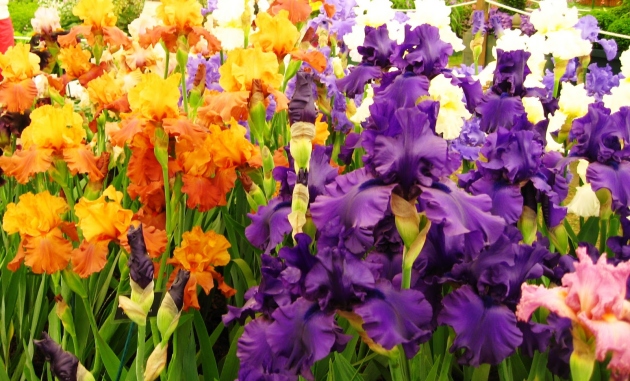
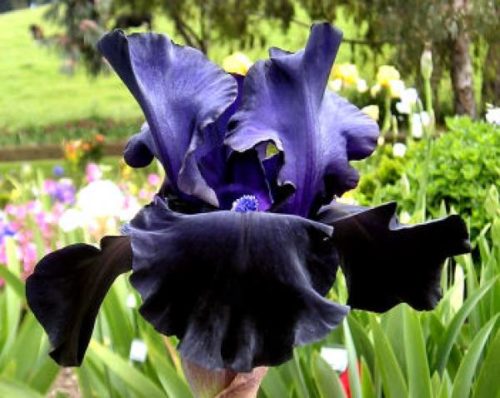
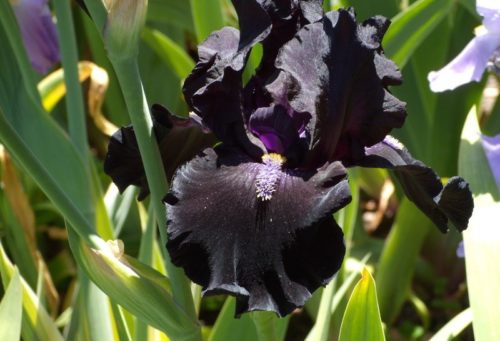
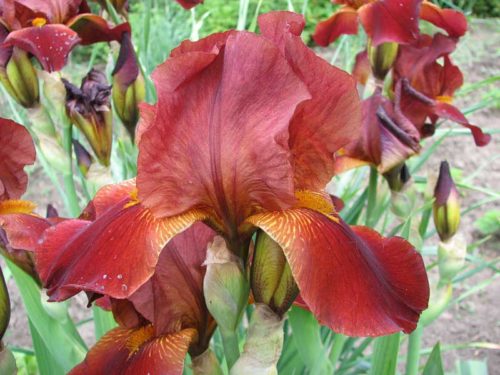
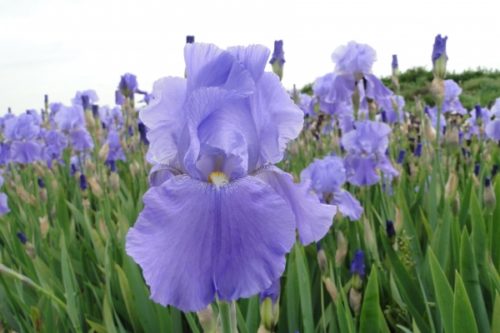
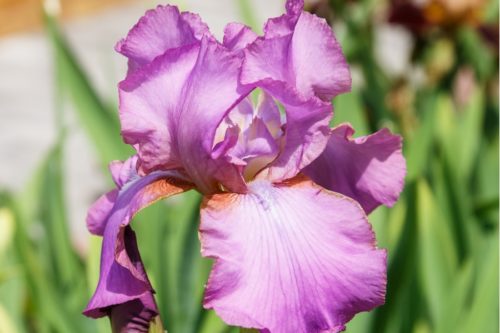
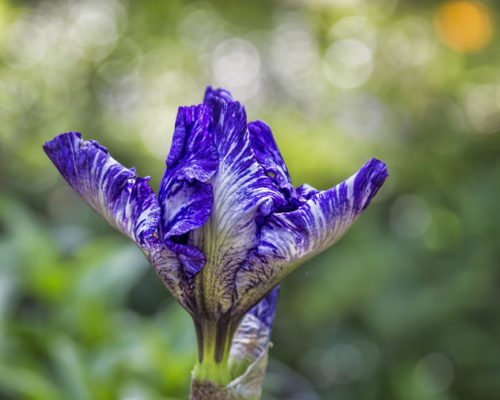

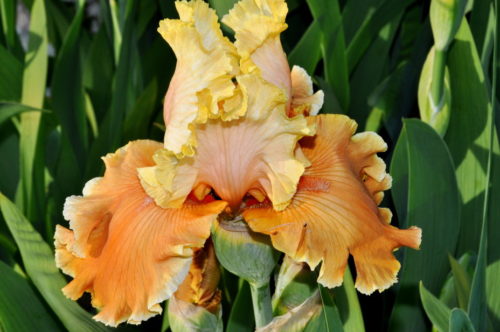
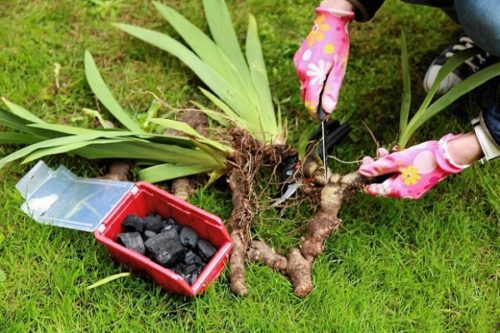
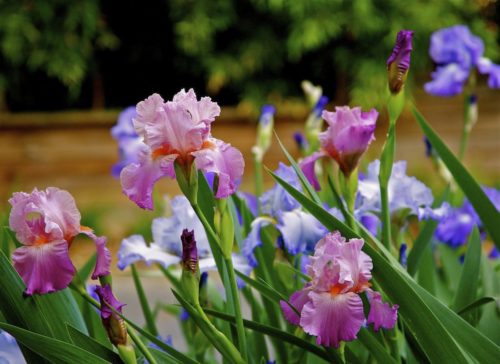
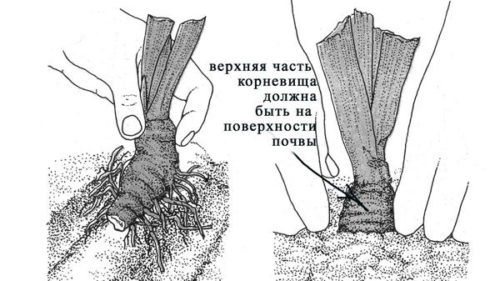
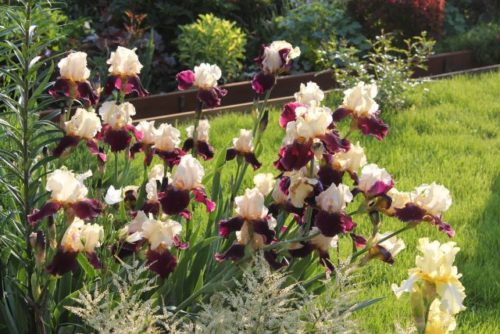
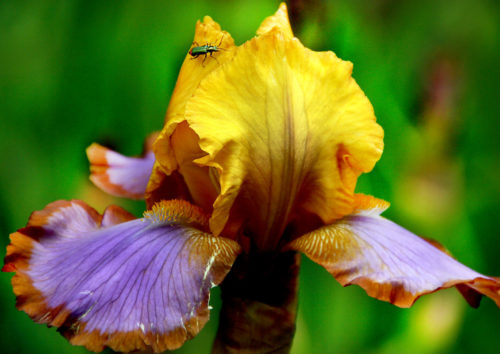
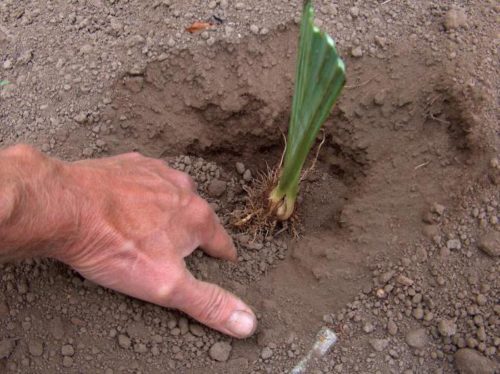
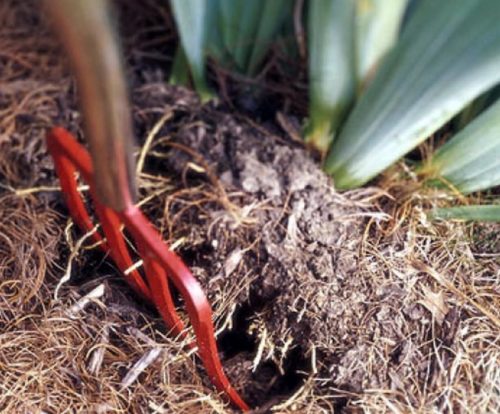
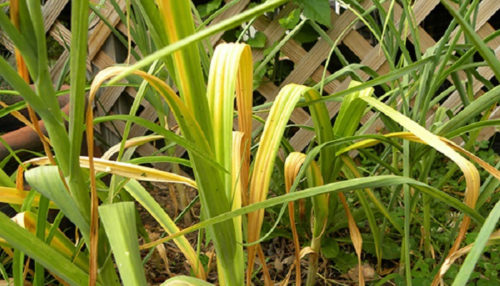
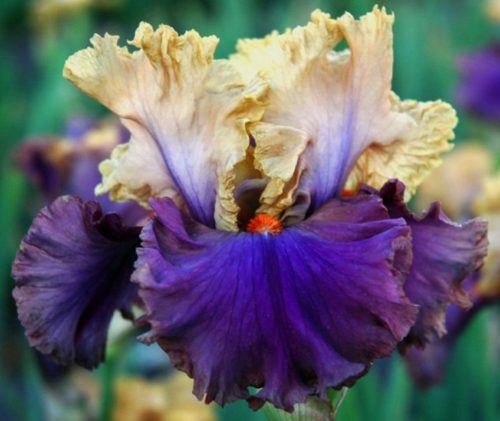
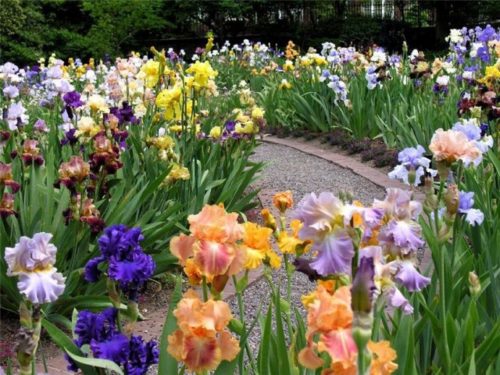
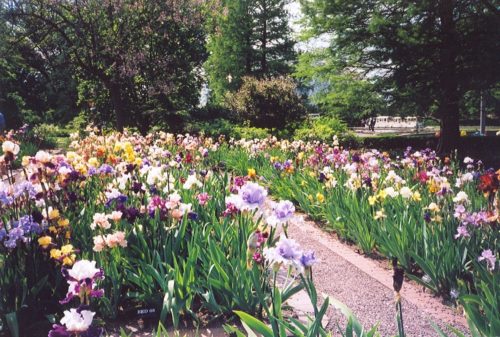
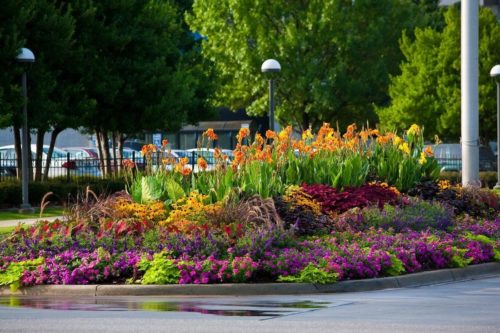
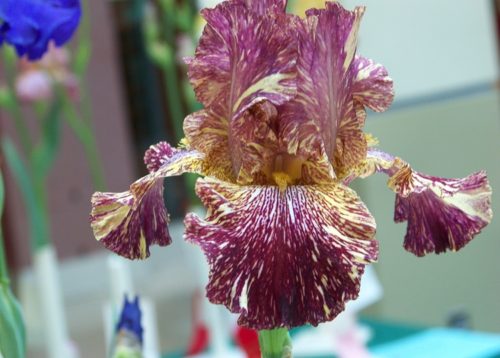
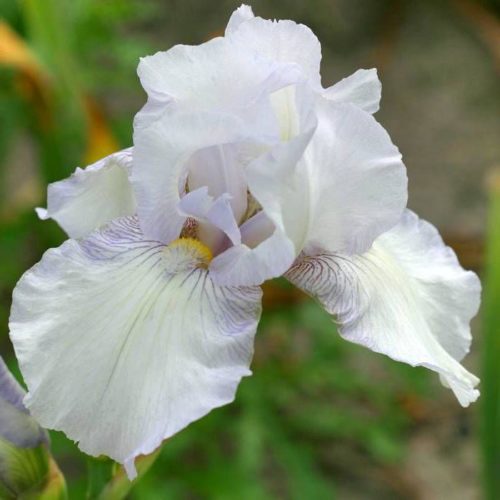
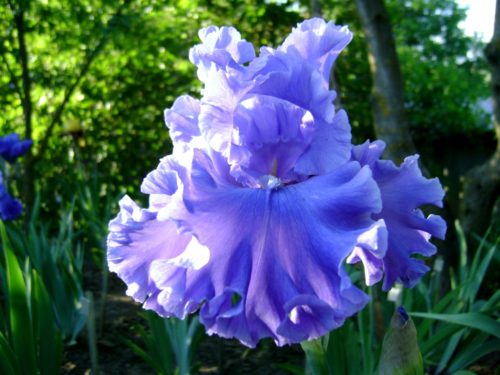
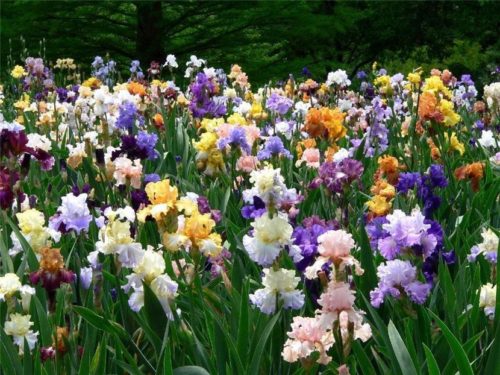












 Start a discussion ...
Start a discussion ...